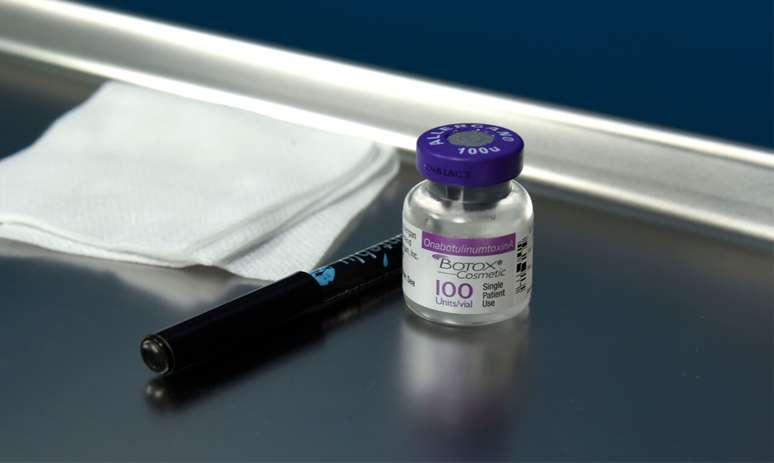It’s not just wrinkles and fine lines that can be treated with Botox. Discover other purposes of the technique
When we think of Botox, we generally associate the substance with the field of aesthetics, where its use is renowned for the reduction of wrinkles and fine lines. However, botulinum toxin goes beyond aesthetics and has been a powerful tool in the treatment of various diseases, ailments, and disorders.
In fact, it is worth underlining that the first therapeutic uses of botulinum toxin date back to decades past, when the American ophthalmologist Alan Scott used it to treat serious ocular defects. Since then, its application has expanded to other areas of medicine, bringing relief and significant improvements in the quality of life of patients.
Dermatologist Dr. Isadora Rosan explains four of these therapeutic applications of botulinum toxin: migraines, hyperhidrosis, bruxism and facial paralysis. Watch:
Migraine
Migraines are a debilitating condition characterized by throbbing headaches, sensitivity to light, and nausea. The use of botulinum toxin has proven effective in the treatment of chronic migraines, as explained by neurologist Pablo Lorenzon, of the Lauro Wanderley University Hospital of the Federal University of Paraíba (UFPB).
“Botulinum toxin represents a remarkable advance in the treatment of chronic migraine. Its application at strategic points around the head can significantly relieve symptoms and improve patients’ quality of life,” says Isadora.
Hyperhidrosis
Hyperhidrosis, or excessive sweating, affects the lives of many people, especially in the armpits, hands and feet. Applying botulinum toxin to the armpits can temporarily block the sweat glands, providing long-lasting relief.
“Hyperhidrosis can be a very embarrassing condition for the patient. When the person has already tried several clinical treatments and has not yet solved the problem, the application of Botox can be a solution, since the toxin blocks the sweat glands. L The use of Botulinum toxin in the armpits can offer significant relief, improving the quality of life and self-esteem of patients,” says the dermatologist.
He adds that this lockdown can last 6 to 8 months and in some cases up to 12 months.
Bruxism
Bruxism is a disorder characterized by the involuntary clenching, slipping, or grinding of teeth, usually during sleep. In addition to being an involuntary action, this behavior can cause headaches, facial muscle discomfort and even cause tooth damage and gum problems.
To treat bruxism, the use of botulinum toxin, popularly known as botox, emerges as an effective option. Isadora explains that the substance is applied specifically to the masseter muscle, responsible for chewing, with the aim of attenuating its excessive activity.
The application of Botox, carried out in a clinical setting, can focus on the masseter or, alternatively, on the temporalis muscle, located on the side of the head. The action of Botox determines muscle relaxation, preventing the muscle from contracting excessively.
“Bruxism can be a debilitating condition for the teeth and facial muscles. Botox, when applied by trained professionals, can relieve symptoms and prevent further damage for 4-6 months after its effects,” says the expert.
Facial paralysis
Facial paralysis is characterized by the weakening or paralysis of the muscles on one side of the face, causing facial asymmetry. One of the most common symptoms of this condition is difficulty making simple movements such as frowning, blinking, smiling, or raising an eyebrow. The application of Botox can attenuate this asymmetry and improve the quality of life of patients, explains the dermatologist.
“Facial paralysis can be a challenging condition for patients, as it affects function and aesthetics. Using Botox to restore facial balance is an option that can make a dramatic difference,” he points out.
However, in both the treatment of facial paralysis and bruxism, it is crucial to exercise caution when applying botulinum toxin, to ensure that only the appropriate muscles are affected, warns the doctor.
Relieves symptoms, but is not permanent!
The therapeutic use of botulinum toxin has revolutionized the treatment of numerous pathologies, going well beyond its initial applications in facial aesthetics. For Isadora this demonstrates the transformative potential of this substance in medicine.
However, while these treatments bring relief to many patients, they are not permanent and may require periodic touch-ups. However, the positive impact on patients’ quality of life is undeniable, making Botox a valuable tool in the medical arsenal.
Source: Terra
Ben Stock is a lifestyle journalist and author at Gossipify. He writes about topics such as health, wellness, travel, food and home decor. He provides practical advice and inspiration to improve well-being, keeps readers up to date with latest lifestyle news and trends, known for his engaging writing style, in-depth analysis and unique perspectives.







